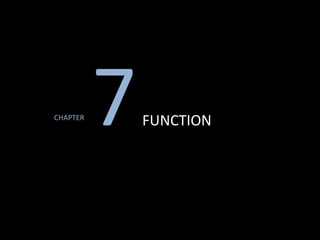
3 d chapter 7 function
- 2. Introduction Utility Double Trustee’s Desk. Shaker. Mount Lebanon, NY. c. 1840. “That which has in itself the highest use, possesses the greatest beauty.” —Shaker Maxim The Shakers, a nineteenth century alternative community, created design that embodied their devout religious beliefs. Their products are revered for their reductive form, exquisite craft, and the plain and humble focus on use.
- 3. The Greatest Good for the Greatest Number of People There are growing numbers of designers, architects, and artists dealing with utility and finding innovative, alternative methods for creating solutions to pressing social and civic problems. Why design a new silver-plated wine cork extractor, however functional, when there are more pressing problems facing humanity? P. J. and J. P. S. Hendrikse, designers. Q Drum. 1993. Introduction Utility
- 4. Utility Art and Design Compared The difference between art and design can be ambiguous. A simplistic difference between art and design is utility—design has a function and art does not. However, most designs are more than mere function. Clothing, for example, is also a sign identifying your personal style, social class, subcultural affiliations, etc. Philip Treacy. Hat. Fall/Winter 2001/2002.
- 5. Art is not devoid of utility. For its audience, art can provide • Delight • Intellectual stimulation • Information • Challenges to preconceptions • Passionate emotional responses • Inspiration to political action Individual artists may celebrate or investigate various aspects of • Phenomena • Form • Perception • Psychological and social structure • Her or his own deepest nature Utility Art Mark Tansey. The Innocent Eye Test. 1981.
- 6. Marcel Duchamp. Fountain. 1917. Utility Art Humanist psychologist Abraham Maslow’s theory of isomorphism (similarity of structure or form) explains that we understand our world based on what we already know. Richard Dawkins explains that memes are similar to genes, and they replicate by being spread from mind to mind. Memes can be ideas, styles, art works, tunes, or theories. Duchamp’s readymades continue to be reinterpreted by artists, one hundred years later.
- 7. Utility Art In products such as prostheses and fishing lures, the makers had to have more than skill; he or she had to carefully observe the form, proportions, color, and texture of the model, as would any good figurative artist. Prosthetic fingers. Dianceht Company. Guadalajara, Jalisco, Mexico.
- 8. Utility Form and Function Form and function is a term used to express the relationship between the form of an object and its use. A closely related notion is form follows function—a dictum of Modernist architects who, turning their backs on the styles of the past, sought new principles to shape their architecture. It is, however, an idea that has been used throughout history, especially in the creation of tools and structures. Paper clip
- 9. Utility Form and Function Ergonomic design engages the idea that designed objects must interact compatibly with the user’s body. For example, this ski pole was designed to fit the hand of the skier and allow him or her to wield the poles effectively and comfortably in all required positions. Peter Stathis, designer. “Thumb Sparing” Ski-Pole Grip. 1991.
- 10. Utility Form and Function Evidence of the close relationship of form to function is seen everywhere in nature. Uniquely specialized insects and animals evolve in order to take advantage of specific opportunities in the ecosystem. The Madagascar Star Orchid evolved a slim, exceptionally long eleven-inch throat with nectar at the bottom. Moths in turn developed longer tongues to reach the nectar. This is an example of the biological concept of coevolution.
- 11. Style Signature and Typology In art and design, style is usually considered to be a particular manner or technique evident in the work. If you have seen a few Giacometti sculptures, such as Man Walking, based on your observation of the artist’s signature elongation of the figure and forms built by hesitant accumulation, you will always be able to spot a Giacometti. Alberto Giacometti. Man Walking (Version I). 1960. Bronze overall (with base), 5' 11 3⁄4” x 10 1⁄2” x 3' 2".
- 12. Style is also a type of artwork, object, or architecture with distinguishing characteristics that may be associated with a general concept or historical period. Such classifications are known as typologies. The BMW motorcycle shares visual characteristics with the streamline style of the 1930s. However, much of the form is simply stylized, and not necessarily a functional aspect of the aerodynamically inspired style. Style Signature and Typology BMW R7 Motorcycle. 1935.
- 13. This young Japanese girl reminds us of the other uses of the word style: • A manner of conducting oneself • Popular artifacts of the moment (things that are in style) • Fashionable elegance. These notions tend to be fleeting, like fads. Does that make them less important? Style Signature and Typology Young woman. Tokyo, Japan.
